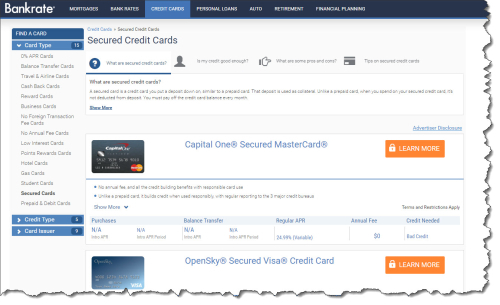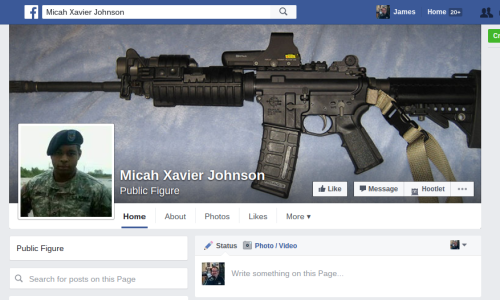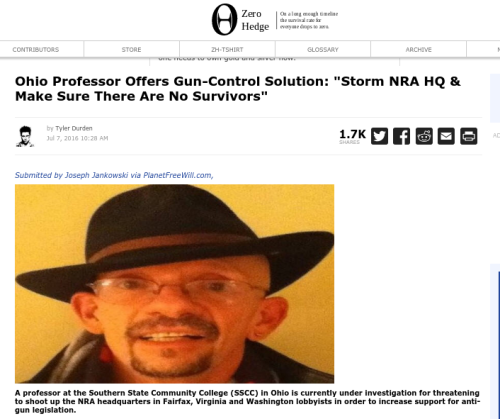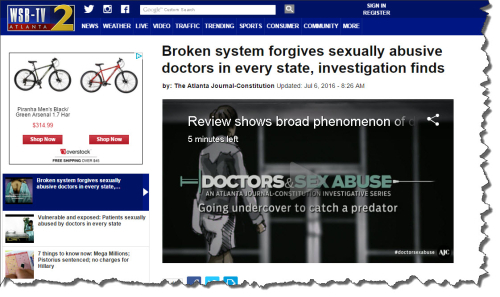James L. Paris's Blog, page 155
July 11, 2016
Secured Credit Cards - The Magic Bullet For Credit Repair?
Both the global and domestic economies have seen great difficulty in regaining their footing in the years that have followed the Great Recession of 2008. Overall growth has remained highly-stagnant in many parts of the world, particularly in these United States. That said, when economies are as soft as they are right now, there are usually a few silver linings from which consumers can benefit, and perhaps the most significant of those is low interest rates on loan products. That is the case right now in America, where interest rates are expected to remain at exceptionally low levels for the foreseeable future.
This is great news for the consumer in the market for a house, a home refinance, a new car, or anything else of substance that he or she is planning to purchase. However, it is only great news if that consumer���s credit history and score is positioned in a way that allows for access to these record-setting rates.
If you are someone who is interested in grabbing a hold of a terrific rate on a house or car, but your credit is not the best, it���s time to do something about it while there���s still time���and one of the easiest and most effective ways to help rehabilitate your credit is through the use of a secured credit card.
Secured Credit Cards
The key difference between a secured credit card and an unsecured, or ���regular,��� credit card is that the secured card is opened by the account holder making a deposit with the issuer equal to the amount of the credit line desired. For example, if you want a secured card from XYZ Bank with a credit limit of $1,000, you have to make what amounts to a security deposit of $1,000 with that bank. As someone who presently has a checkered credit history but wishes to open a new, ���clean��� credit line to begin repairs, this is a winning proposition for both you and the card issuer; you get your new credit line to use and properly manage, and the bank grants you this line with no risk on their part because they have your money on deposit as full collateral.
Secured Cards are No Different than Unsecured Cards When It Comes to Use
One of the questions frequently asked about secured cards is if there is something about how they look that distinguishes them from unsecured cards. Many people with blemished credit are understandably self-conscious about their situations, and are concerned that there is something on a secured card that might tip off a merchant that the card is ���different.��� There is no such cue on a secured card. It is a Visa or MasterCard credit card that looks like any other Visa or Master Card credit card to a merchant.
As for what you can purchase with a secured card, again, you can buy anything that can be purchased with an unsecured card. The only limitation has to do with your credit limit, which is the same issue that you would encounter with an unsecured card. On that point, note that secured cards generally have lower limits than those available with their unsecured counterparts. While an increasing number of secured cards are available with limits as high as a few thousand dollars, limits of $300 to $1,000 are still prevalent; remember, the limit is typically a function of how much money a person has to put on deposit, and few people have several thousands of dollars to leave at a bank to secure a credit card. Sometimes, lower card limits can be a challenge, like when you want to rent a car. It is typical for a rental car company to put a hold of several hundred dollars against a customer���s credit card, and if the card happens to have a limit of, say, $300, there���s a good chance the transaction won���t go through.
Aside from limit-related obstacles, however, secured cards can be used to purchase the same goods and services that unsecured cards can buy.
Secured Card Fees
While this should not be a big deal for the person serious about using a secured card to improve his or her credit, it is worth noting that secured cards typically carry higher fees than unsecured cards.
The annual fee of a secured card will often run around $40. Again, not a big deal, but it is something you won���t normally encounter any longer with an unsecured card. Additionally, you will still pay interest on any balances you carry, just like you would with an unsecured card, and secured card rates tend to be a little higher.
One caveat: There are some less reputable card secured card issuers out there that have been known to tack on monthly ���insurance��� fees and other junk fees that exist really just to take advantage of a credit-challenged consumer���s situation. By going with a secured card from your local bank or credit union, or from a well-known national issuer (more about this in a bit), you won���t have these problems, but it���s something of which to be aware.
The Best Way to Use a Secured Credit Card as a Credit Rehabilitation Tool
OK. You have your secured card. Now���how do you use it to begin the process of restoring your credit?
The first thing to remember is that the rules that normally apply to keeping an unsecured card account in good standing apply on steroids to the secured card account holder. For example, while it is never a good idea to make a late payment with an unsecured card, it can be ruinous to your credit repair efforts to do so as a secured card holder. It���s important that you see your secured card as a last chance for good credit.
Another important factor of which to be aware is something called the debt utilization ratio. That is a fancy term for describing the amount of available credit you���re actually using. For example, if a person has two credit cards, each with $5,000 credit limits, then he has total available credit of $10,000. If one of those cards presently has a $5,000 balance, and the other has a $3,000 balance, then his debt utilization ratio at that time is 80%, because he���s carrying balances that total 80% of his available credit.
Using the above example, 80% is way too high for a debt utilization ratio. Those with the best consumer credit profiles tend to have debt utilization ratios of no more than about 10%, which means that if you���re relying on a single secured card, and your limit is $1,000, you, ideally, don���t want your balance to ever stray past $100.
Please note how important debt utilization is to your good credit: The analysis of an individual���s debt utilization ratio accounts for roughly one-third of his credit score; one-third. The bottom line is that you want to keep your ratio as low as possible.
Some of you might roll your eyes when you read that, disappointed that you have this new, secured card backed by a bank deposit but unable to use more than a small portion of the available limit, but remain mindful of why you���re doing this in the first place - the sole reason you have the secured card is to use it as a strategic tool to rebuild your credit; you don���t have it as a means to buy a lot of ���stuff.���
After about a year of being a good steward of the secured card, you will become eligible for an unsecured card account. You can either take this up with the bank at which you have the secured card, or begin making applications elsewhere. This is what you want, of course���to make more progress rehabilitating your credit by getting back to the point where you can have a ���regular��� credit card and begin managing it just as prudently.
Where to Find a Secured Card
Thanks to the Internet, finding quality secured cards is not a problem, but you might want to first look to a local bank or credit union that can offer you better terms and/or a lower credit limit entry point. If you would like to see what is available online from nationally-known issuers, one good place to look is over at Bank Rate Monitor.
So many of our readers have asked for a referral to a credit repair program that we now have a recommendation on this (by way of an online platform). The secured credit card is a great start to rehabilitating your credit, but there will be more to do. Ultimately, a superior credit profile will consist of 1-2 lines of installment credit (e.g., home loan, car loan, school loan) and 2-3 lines of revolving credit (like an unsecured credit card). You won���t get there overnight, but beginning with a well-managed secured credit card that turns into a gateway for additional lines of both secured and unsecured credit is a great first step.
If you want to go further, and faster, into working toward a better credit profile, you���ll have to do a little more work. On that note, you might have an interest in learning more about a straightforward, easy-to-use, computer-based program designed to help those who are ���credit challenged��� to remedy their credit-related problems: Credit Repair Magic (in the interest of full and fair disclosure, please note that we are compensated affiliates of the Credit Repair Magic program).
Several excellent resources make up the entire Credit Repair Magic package, but the centerpiece of the program is the ���Bad Credit Eliminator��� feature. The Bad Credit Eliminator is the highly-actionable program that walks you, step-by-step, through the entire process of cleaning up your credit. However, addressing negative items on your report is just one part of your overall credit picture. Other resources in Credit Repair Magic discuss a wide variety of other credit-relevant issues, including the importance of proper debt utilization (the amount of available credit that you���re actually using), the kinds of loans that actually reflect more favorably on your credit, and even why it is may be best, at times, to leave some negative items on your credit report.
So, what do you receive in your Credit Repair Magic package? A bunch. What follows is just a brief overview of all that is contained in Credit Repair Magic, because to detail and explain all of the features would take up pages and pages:
The Credit Repair Magic ���Bad Credit Eliminator.��� A trademarked process for restoring your credit quickly and easily.
The Credit Repair Magic ���Seven Shortcuts to Success��� Guidebook. This material is particularly valuable when you are looking to qualify in a hurry for a home or auto loan. It presents targeted strategies to help you to improve your score even faster.
The Credit Repair Magic ���Solving the Credit Puzzle��� Reference Guide. A terrific resource���131 pages packed with a mountain of information on the subject of credit repair. This resource, by itself, is worth much of the cost of the entire Credit Repair Magic program.
The Credit Repair ���Solving the Credit Puzzle��� Reference Guide - Express Version. A condensed, easily-digested, 36-page version of the full reference guide, when you need to go back and hit the ���high points��� of the full reference guide but don���t have time at the moment to dig through the more substantial version.
Lifetime access to any and all upgrades/additions made to the comprehensive Credit Repair Magic program.
Credit Repair Magic contains additional bonus materials, as well, but let���s talk about some other great features. For one thing, there is the excellent support available from the program architect. To begin with, you receive unlimited email support during the first 60 days of your paid access. This is particularly important, because it is typically during this period when you will have the greatest number of questions about what it is you���re doing as you work your way to better credit. What���s more, even after the first 60 days, the folks at Credit Repair Magic will continue to entertain your questions on a discretionary basis for an unlimited period of time, as circumstances arise in your credit repair journey that you feel are in need of some extra attention.
In addition to all of this, you enjoy the rock-solid protection that comes with the product���s accompanying 60-day, money-back guarantee. Unbelievably, this means you can get right to work using the full resources of Credit Repair Magic, including the unlimited email support, and if at any time during the first two months you decide this is not for you, you can still get all of your money back.
Rehabilitating credit to the healthiest level possible may be the single most important step any of us takes in the realm of consumer finance, and one that is imperative to you realizing the best available loan rates, such as the ones we���re likely to see for a while. To learn more about the Credit Repair Magic product, or to purchase the program directly, Click Here.
By Robert G. Yetman, Jr. Editor At Large
July 9, 2016
Facebook Tribute Page to Dallas Police Killer Has Over 1,000 ���Likes���
Micah Xavier Johnson, the person believed to be responsible for the murder of five Dallas police officers on Thursday night, is being celebrated by large numbers of your fellow citizens on a Facebook Fan Page set up by an as-yet unknown person.
There was a time I would have been shocked to see something like this, but not anymore. This is the new America; this is where we are now.
Johnson���s Fan Page, at this writing, has about 1,200 ���Likes,��� and that number continues to grow steadily. The profile picture of the Page shows Johnson in his military uniform. As you may have heard, Johnson was a deployed to
Afghanistan from 2013 to 2014 as a member of the U.S. Army.
The Page���s cover photo depicts an AR-15 rifle, but the source of this photo is not known, and it is also not known if this was a weapon that Johnson had in his possession when he carried out his attacks.
The posts on the Page itself are a mix of anti-White, anti-police, and pro-militancy statements and suggestions. While many commenting on the post ���threads��� express clear condemnation of Johnson and his actions, a large number have voiced their support for what Johnson did.
By Robert G. Yetman, Jr. Editor At Large
Anarchy on the Streets May Prompt You to Stay Home���but Home Had Better Be Prepared
Watching the chaos unfold on Dallas streets, seeing police officers brazenly targeted by a domestic terrorist angry at ���the system,��� and all of this against the backdrop of steady decline in the moral, ethical, and lawful fabric of society���I had a knee-jerk, ���in the moment��� reaction to what I was seeing: I���m staying in, as much as possible.
What���s more, I know I���m not the only one who feels this way; this is a sentiment I���m hearing more frequently from those around me.
Regardless of whether you are a Republican or a Democrat, assuming you���re not in favor of the rule of lawlessness, of terrorism, of anarchy���you���re probably thinking along the same lines. I mean, who wants to be ���out there��� anymore than he or she has to? People are just nuts now.
Even absent the dire circumstances and situations we���ve seen on the news lately, it seems like going out has just become more of a hassle ��� discourteousness, for example, is everywhere, and it���s clear the pronounced stresses of the world, including those associated with a chronically difficult economy, have so many people walking around with ���hair-trigger��� tempers nowadays.
Seriously, who needs it?
Yes, you have to go to work, but once work is done and the kids are picked up, it���s tempting to just want to ���shelter in place,��� even if we don���t consider the average day in America to be representative of ���distressed conditions.��� That said, nowadays, maybe we do.
Anyway���
As the deterioration continues, and you���re thinking that perhaps you will spend more of your time at the house, remember that the house has to be ready, as well. I���m not even talking about engaging in hard-core prepping or anything like that, but, rather, having the ���home front��� squared away to a degree that will allow you to get by fine for several days, even a week or two, should trouble out there bubble up in such a way that it becomes dangerous to leave and buy food or other essentials.
If you���re thinking along the same lines, but don���t where to begin, I may have just the answer. A while back, I tripped over a fine e-product called Get Prepped in 1 Trip to Walmart. Sound interesting? It is just what you think it is: a guide to prepping in the way that prepping likely makes most sense to you, where you���re appropriately supplied to survive comfortably at home for a few weeks on end, but not necessarily preparing for the Apocalypse. That said, there���s nothing at all wrong with preparing for the possibility of something really big, but, frankly, most people aren���t inclined to do that, which is fine. Nevertheless, even if you���re not expecting to have to ready yourself to live in a ���Mad Max��� world, one look at the condition of things today should lead you to conclude that it���s probably a good idea to be prepared to sit tight, if necessary, for at least a few weeks. That just makes sense.
Get Prepped in 1 Trip to Walmart is a terrific information source for those people who want to make the stockpiling of essential survival supplies as quick and painless as possible. Make no mistake, however; this is not just some glorified checklist (although the several supplies lists provided are excellent resources, and go a long way to helping one to more quickly and efficiently obtain what he or she needs). The Get Prepped in 1 Trip to Walmart package contains a wealth of actionable information on how to be prepared for the next disaster. Get Prepped is presented in a multitude of e-reports and videos that cover a wide array of survival topics. It would not be feasible to list in this space all of the different videos and PDFs that make up Get Prepped, but here are the self-explanatory titles of just a few:
Fifty Essential Food Items, Parts 1 and 2 (videos)
Home to Fortress in 7 Days (PDF)
How to Keep Your Stockpile Hidden (PDF)
Spot a Disaster Before It Hits (PDF)
DIY Solar Water Purification (video)
Fundamentals of Organic Gardening for Preppers (video)
Stockpiling for Pennies (PDF)
Safeguarding Your Family Against Terrorist Attacks (PDF)
Ultimate Survival First Aid Kit (video)
This is just the beginning���there���s lots more, including, as mentioned, several lists to help make the accessing of necessary provisions so much easier. Best of all is that everything you need can be found at Walmart, which is what this package is really all about. In just one afternoon, you and your family members can emerge from your local superstore with everything you need to be ready should protest violence, a natural disaster, or some other kind of significant trouble comes your way.
If you see yourself as one of those folks who could benefit from a bit of a head start when it comes to prepping, and, like me, appreciate having the ability to grab in just one afternoon all of what you���ll ever likely need to withstand even a relatively severe crisis, then Get Prepped in 1 Trip to Walmart may be just the ticket. Note, too, that as with practically every product we suggest in this space, this package comes with a 60-day, money-back guarantee, so that if you decide it���s not for you, no problem; it���s super-easy to get a full refund. To learn about this great package, or to simply grab it straight-away, Click Here.
By Robert G. Yetman, Jr. Editor At Large
July 8, 2016
Liberal College Professor Decides Best Way to Gain More Gun Control is to Slaughter NRA Leadership
Adjunct professor James Pearce of Southern State Community College (SSCC) in Ohio is in some hot water related to a Facebook post he made back on June 13. It seems that the professional educator has very definite ideas about how to engender more gun control in the United States, ideas he chose to share in the mid-June Facebook post at issue.
Here is what he had to say:
���Look, there���s only one solution. A bunch of us anti-gun types are going to have to arm ourselves, storm the NRA headquarters in Fairfax, VA, and make sure there are no survivors.
This action might also require coordinated hits at remote sites, like Washington lobbyists.
Then and only then will we see some legislative action on assault weapons.
Have a nice day.���
According to the Highland County Press, Todd Wilkin, the Director of Safety and Security in Hillsboro, Ohio, where SSCC is located, was sufficiently concerned by the post to notify local law enforcement as well as officials at the college itself. Gary Heaton, who is the coordinator for SSCC Security and Emergency Response, said that the Facebook post was reported to the FBI and the Department of Homeland Security. Heaton told the Highland County Press that SSCC Vice President Dr. Nicole Roades was advised by the Attorney General to take no action until federal authorities had finished with their investigation.
One wonders if the advice would have been the same had this been a conservative, gun-toting professor advocating the slaughter of Planned Parenthood leadership.
Somehow, I doubt it.
By Robert G. Yetman, Jr. Editor At Large
Judge Jeanine Furious at No Hillary Indictment, Talks Double Standard
Fox News��� Judge Jeanine Pirro, herself a former actual judge and prosecutor, made no effort to hide her contempt for both Hillary Clinton and the Justice Department during an appearance on ���Your World��� with guest host Maria Bartiromo on Thursday. Pirro was speaking, of course, in the wake of the FBI���s decision to refrain from pursuing any charges against Clinton for both her involvement in the mishandling of sensitive government emails as well as her clear efforts to deceive the agency, and said that this outcome surely has J. Edgar Hoover ���spinning in his grave.���
Pirro accused FBI director James Comey of going through ���every possible loophole to provide [Clinton] with cover,��� and that such ���is a sad, sad commentary on the Department of Justice and the FBI.���
The judge also went on to point out that ���Martha Stewart said one thing to an FBI agent that was not true. She went to jail for a year. Hillary Clinton lied to the American public over and over about classified information for a year and nothing. This is a dual system of justice and as someone who has devoted her live to it, I am so disappointed.���
By Robert G. Yetman, Jr. Editor At Large
July 7, 2016
Federal Judge Says You Have No Expectation of Privacy When Using Your Personal Computer
What a couple of weeks it has been for Joe Average ��� the typical, law-abiding citizen.
Most notably there is Hillary being let off the hook for the mishandling of sensitive documents, something that would have surely seen the rest of us fined enormous sums and likely sent to prison for doing the same thing.
Not as well known, but perhaps even more ominous for all of us regular folks, is a decision that was handed down June 23 by the U.S. District Court for the Eastern District of Virginia, decreeing that no one should have an expectation of privacy at his or her home personal computer���because no computer that is actually hooked up and functioning ���is immune from invasion.���
What the federal jurist, Senior U.S. Judge Harry Coke Morgan, Jr., basically said in his ruling is that a computer that is connected to the Internet is, by definition, unsecure, because there are no security measures that can absolutely stop a hacker; and because we all know, or should know, that such is the case, the user of that computer therefore has no legitimate privacy expectation.
What started all of this was an FBI investigation of child porn activity on the ���dark web,��� an encrypted network. The bottom line is that the FBI used a technique to engage in a mass hacking of the computers visiting the child porn site under scrutiny, and that���s what had so many privacy experts up in arms - that such a hacking could legitimately be done on the basis of a single warrant.
However, not only did Senior U.S. Judge Harry Coke Morgan, Jr. uphold the warrant, he said that the warrant was actually unnecessary because Internet users should not have any ���objectively reasonable expectation of privacy.���
Other courts have held differently, saying that being connected to the Internet does not deprive a PC user of a reasonable expectation of privacy, but Morgan���s decision may well be the standard for the time being.
It���s tempting to be dismissive of this on the basis that what the feds were going after here are people interested in accessing the worst kind of stuff imaginable. Still, the idea that there is now a legal precedent that declares if you use the Internet, that you automatically forsake any right to privacy, is about as scary as it gets.
It is, however, precisely because of this ruling, precisely because it is clear that there are different sets of rules for those in power than exist for the rest of us���that we all do whatever we can to make it more difficult for others to monitor our every step, particularly those steps we take on the Internet.
To that end, a resource you should certainly find helpful is an ebook called The Patriot Privacy Kit. It provides a wealth of useful information on how to stay safe online, including how to secure your computer hardware and software platforms, how to be a good steward of your all-important passwords, and how to use email more securely. This ebook also looks at what you need to know to be safe as a regular user of social media, including the ubiquitous Facebook, and also includes great information on how to secure your sensitive information offline (even in this ���Internet age,��� most ID theft still takes place that way, from the compromise of documents in a physical form).
Here is a brief overview of what you���ll find in The Patriot Privacy Kit:
Step 1: Secure the Premises. You���ll learn how to get rid of spying software, keystroke recorders, and hidden viruses that allow others to steal your information. You���ll also learn two easy methods to completely secure your Wi-Fi network.
Step 2: Password Protection. Choosing the right password can protect you from identity theft easier than anything else, but 99% of Americans are choosing and storing passwords the wrong way. Here you will learn how to pick unbreakable passwords AND safely store your logins so that you don���t have to remember all your new passwords.
Step 3: Email Security. You will learn easy-to-implement procedures to secure your email, including how to prevent the NSA from spying on your email account.
Step 4: Using the Internet. Here you will learn 13 additional tips for browsing the internet safely and foiling hackers and trackers. If you shop or buy things on the web, THIS is a MUST-READ chapter for you. Additionally, you will learn how to erase your Google search history and never worry about who is seeing your Google searches ever again.
Step 5: Using Social Media the Right Way. Make sure you and your kids are protecting your private information on the world���s most popular websites. In this section, you will learn the latest strategies that will allow you to connect with friends without giving out your personal information to strangers.
Step 6: Protecting your Business and Website. In this section, you will learn how to protect yourself against attacks to any business or other websites you may have.
Step 7: Offline Privacy. Protect your personal and financial identity with these simple steps���and, yes, this is stuff you need to be doing even if you have LifeLock or a similar service. Find out if someone is using your social security number, monitor your credit for free, and protect your family history. You can even lock up your medical records, and use phones securely with these tips. You will even learn how to get your FBI and other government files.
Step 8: Going Invisible. Learn how to cover the tracks behind you, deleting what is already out there about you and can be linked to you.
Step 9: Going Invisible. Learn to cover your tracks going forward, maintaining an anonymous online presence. Wouldn���t you like to learn how to browse, shop, interact, and email online without being tracked or spied on?
Step 10: Gain Control of Your Personal Information. You will learn how to track down your personal information being held with online detectives and databases, as well as how to demand that they stop selling your information.
Something else - The Patriot Privacy Kit comes with a fantastic money-back guarantee, which means you can read and use the information through and through���and if you���re still not satisfied, you can get all of your money back, with no fuss. How great is that?
To learn more about the highly-informative, VERY timely Patriot Privacy Kit, Click Here.
By Robert G. Yetman, Jr. Editor At Large
July 6, 2016
Gretchen Carlson Lawsuit - Read Entire Complaint Here
Fox News Anchor Suing Roger Ailes For Sexual Harassment
ChristianMoney,com Staff Writers
Fox News has been known for its strikingly beautiful female anchors, and now one of them is apparently suing for sexual harassment. The complaint names Fox News chief Roger Ailes. This is not the first time that Fox News has has faced such accusations. Anchor Bill O' Reilly settled a sexual harassment case in 2004. The plaintiff, Gretchen Carlson, is a former Miss America and has worked for Fox News since 2006. The entire legal complaint can be read here - Gretchen Carlson Complaint.
CNN���s Tom Kludt released a revealing statement that reads in-part:
���One of the media industry���s most powerful figures fired a longtime on-air personality because she refused to sleep with him and reported disparaging treatment in the newsroom.
Such are the key allegations in a sexual harassment and retaliation lawsuit filed today by Fox News host Gretchen Carlson against the network���s chairman and CEO Roger Ailes.���
Navy Officer Headed To Prison, Hillary Goes Free
I have never had access to classified government documents, but those that work in such environments are aghast that Hillary Clinton was not indicted. One of the most significant issues here (and there are many) is how the government can engage in future prosecutions after not charging Hillary. Take for example the case of Kristian Saucier. Saucier, age 29, is accused of taking pictures with his cell phone inside a U.S. Navy Submarine.
From the government press release dated May 27, 2016
On Jan. 19, 2009, Saucier took two photos, one of the auxiliary steam plant panel and the other of the reactor compartment viewed through a portal. On March 22, 2009, Saucier took two photos that, when placed side by side, provided a panoramic array of the maneuvering compartment, the room from which the propulsion system of the boat is operated. On July 15, 2009, Saucier took two photos documenting the reactor head configuration of the nuclear reactor and a view of the reactor compartment from within that compartment.
Saucier had a secret clearance and knew that the photos depicted classified material and that he was not authorized to take them. He retained these photos and failed to deliver them to any officer or employee of the United States entitled to receive it.
The investigation began in March 2012 when Saucier���s cellphone was found at a waste transfer station in Hampton, Connecticut. Saucier was interviewed by the FBI and Naval Criminal Investigative Service (NCIS) in July 2012 and was confronted with the classified images from his phone. Following that interview and in an effort to impede the federal investigation, Saucier returned to his home and immediately destroyed a laptop computer, a personal camera and the camera���s memory card. Pieces of a laptop computer were subsequently found in the woods on a property in Connecticut owned by a member of Saucier���s family.
Saucier was arrested on a criminal complaint on May 28, 2015, and was subsequently indicted. Entire press release here
I honestly had to read the press release twice and am still scratching my head. Even more so when I got to the part that Saucier is now facing 10 years in prison and a $250,000 fine. I don't have to scream and shout here for you to get the point. While I have no idea if Saucier was up to anything sinister, this case simply shows how the government does prosecute average people for mishandling classified information. How can anyone consider what Hillary did any less egregious? How can the FBI not find intent to mishandle classified documents when Hillary went to such great lengths to set up her own private e mail server?
Helping you make the most of God's money!
James L. Paris
Editor-In-Chief ChristianMoney.com
Follow Me on Twitter Twitter.com/jameslparis
Christian Financial Advice
Jim Paris 24 Hour Radio
Thousands Of Doctors Sanctioned For Sexual Misconduct
By ChristianMoney.com Staff Writers
The Atlanta Journal Constitution has published an investigative report today addressing the issue of sexual misconduct of doctors. Using nationwide public records, the paper is reporting that there have been 3,100 such cases since 1999. The report also raises questions about the lack of oversight and accountability that exists within the medical field in dealing with predator doctors. One doctor profiled received a 50 year sentence after sexually assaulting an undercover investigator. The theme of the report seems eerily similar to how the Catholic Church historically dealt with pedophile priests.




















